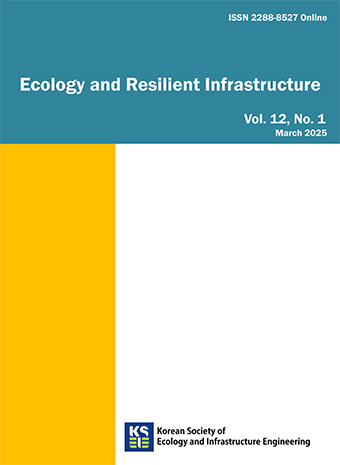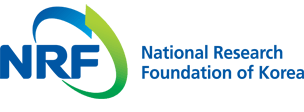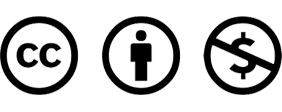Original Article
Adiansyah, J.S., Rosano, M., Vink, S., and Keir, G. 2015. A framework for a sustainable approach to mine tailings management: disposal strategies. Journal of Cleaner Productio 108: 1050-1062.
10.1016/j.jclepro.2015.07.139Ali, H., Khan, E., and Sajad, M.A. 2013. Phytoremediation of heavy metals-concepts and applications. Chemosphere 91: 869-881.
10.1016/j.chemosphere.2013.01.07523466085Ali, H. and Khan, E. 2019. Trophic transfer, bioaccumulation, and biomagnification of non-essential hazardous heavy metals and metalloids in food chains/webs-concepts and implications for wildlife and human health. Human and Ecological Risk Assessment. An International Journal 25(6): 1353-1376.
10.1080/10807039.2018.1469398Alloway, B.J. 2013. Sources of heavy metals and metalloids in soils. In, Alloway, B.J. (ed.), Heavy Metals in Soils. Springer, Dordrecht, Netherlands. pp. 11-50.
10.1007/978-94-007-4470-7_2Bae, B. and Kim, Y. 2024. Selection of plant species for phytoremediation of arsenic contaminated sandy soil in a pine forest at Janghang, Korea. Ecology and Resilient Infrastructure 11(3): 65-77. (in Korean)
Baker, A. and Brooks, R. 1989. Terrestrial higher plants which hyperaccumulate metallic elements: a review of their distribution, ecology and phytochemistry. Biorecovery 1(2): 81-126.
Baker, A.J.M., Reeves, R.D., and Hajar, A.S.M. 1994. Heavy metal accumulation and tolerance in British populations of the metallophytes Thlaspi caerulescens J. et C. Presl. (Brassicaceae). New Phytologist 127: 61-68.
10.1111/j.1469-8137.1994.tb04259.x33874394Beyersmann, D. and Hartwig, A. 2008. Carcinogenic metal compounds: recent insight into molecular and cellular mechanisms. Archives of Toxicology 82(8): 493-512.
10.1007/s00204-008-0313-y18496671Bolan, N., Kunhikrishnan, A., Thangarajan, R., Kumpiene, J., Park, J., Makino, T., Kirkham, M.B., and Scheckel, K. 2014. Remediation of heavy metal (loid) s contaminated soils-to mobilize or to immobilize? Journal of Hazardous Materials 266: 141-166.
10.1016/j.jhazmat.2013.12.01824394669Chaney, R.L., Malik, M., Li, Y.M., Brown, S.L., Brewer, E.P., Angel, J.S., and Baker, A.J. 1997. Phytoremediation of soil metals. Current Option in Biotechnology 8(3): 279-284.
10.1016/S0958-1669(97)80004-39206007Chang, J.S., Kim, H.J., Kim, W.S., and Lee, S. 2024. Ars genotype of arsenic oxidizing bacteria and detoxification. Journal of Korean Society of Environmental Engineers 46(5): 185-194. (in Korean)
10.4491/KSEE.2024.46.5.185Cristaldi, A., Conti, G.O., Jho, E.H., Zuccarello, P., Grasso, A., Copat, C., and Ferrante, M. 2017. Phytoremediation of contaminated soils by heavy metals and PAHs. A brief review. Environmental Technology & Innovation 8: 309-326.
10.1016/j.eti.2017.08.002Dary, M., Chamber-Pérez, M., Palomares, A., and Pajuelo, E. 2010. "In situ" phytostabilisation of heavy metal polluted soils using Lupinus luteus inoculated with metal resistant plant-growth promoting rhizobacteria. Journal of Hazardous Materials 177: 323-330.
10.1016/j.jhazmat.2009.12.03520056325Egendorf, S.P., Groffman, P., Moore, G., and Cheng, Z. 2020. The limits of lead (Pb) phytoextraction and possibilities of phytostabilization in contaminated soil: a critical review. International Journal of Phytoremediation 22(9): 916-930.
10.1080/15226514.2020.177450132677841Guerinot, M.L. and Salt, D.E. 2001. Fortified foods and phytoremediation. Two sides of the same coin. Plant Physiology 125: 164-167.
10.1104/pp.125.1.16411154324PMC1539353Jaffré, T., Brooks, R.R., Lee, J., and Reeves, R.D. 1976. Sebertia acuminata: a hyperaccumulator of nickel from New Caledonia. Science 193: 579-580.
10.1126/science.193.4253.57917759588Jung, M.C., Ahn, J.S., and Chon, H.T. 2001. Environmental contamination and sequential extraction of trace elements from mine wastes around various metalliferous mines in Korea. Geosystem Engineering 4: 50-60.
10.1080/12269328.2001.10541168Kabata-Pendias, A. and Pendias, H. 2001. Trace elements in soils and plants. CRC Press, Boca Raton, Florida, USA.
10.1201/9781420039900Khan, M. and Jones, D. 2009. Effect of composts, lime and diammonium phosphate on the phytoavailability of heavy metals in a copper mine tailing soil. Pedosphere 19: 631-641.
10.1016/S1002-0160(09)60158-2Krishnaraj, S., Dixon, M.A., and Saxena, P.K. 2000. Scented geraniums: a model system for phytoremediation. Korean Journal of Plant Tissue Culture 27: 325-337.
Kumino, T., Saeki K, Nagaoka, K, Oyaizu, H., and Matsumoto, S. 2001. Characterization of copper-resistant bacterial community in rhizosphere of highly copper- contaminated soil. European Journal of Soil Biology 37: 95-102.
10.1016/S1164-5563(01)01070-6Kwon, H.J., Lee, C.H., and Kim, S.H. 2019. Heavy metals uptake capability and growth of fifteen compositae plants for phytoremediation. Korean Journal of Plant Resources. 32(1): 1-8.
Lim, H.S., Lee, J.S., Chon, H.T., and Sager, M. 2008. Heavy metal contamination and health risk assessment in the vicinity of the abandoned Songcheon Au-Ag mine in Korea. Journal of Geochemical Exploration 96(2-3): 223-230.
10.1016/j.gexplo.2007.04.008Marques, A.P.G.C., Rangel, A.O.S.S., and Castro, P.M.L. 2009. Remediation of heavy metal contaminated soils: phytoremediation as a potentially promising clean-up technology. Critical Reviews in Environmental Science and Technology 39: 622-654.
10.1080/10643380701798272Ministry of Environment (MOE). 2010. Survey result of soil pollution from waste coal mines (http://www.me.go.kr).
Pan, H., Zhou, G., Cheng, Z., Yang, R., He, L., Zeng, D., and Sun, B. 2014. Advances in geochemical survey of mine tailings project in China. Journal of Geochemical Exploration 139: 193-200.
10.1016/j.gexplo.2013.07.012Park, Y.H. and Seo, K.W. 2005. Policy suggestions for soil contamination prevention and management of inactive or abandoned metal mines. KEI 2005 WO-03, Korea Environment Institute, Sejong, Kora. (in Korean)
Park, Y.S. and Park, J.B. 2002. Effects of heavy metals on growth and seed germination of Arabidopsis thaliana. Journal of Environmental Science 11: 319-325. (in Korean)
10.5322/JES.2002.11.4.319Rahman, M.A., Rahman, M.M., Reichman, S.M., Lim, R.P., and Naidu, R. 2014. Heavy metals in Australian grown and imported rice and vegetables on sale in Australia: health hazard. Ecotoxicology and Environmental Safety 100: 53-60.
10.1016/j.ecoenv.2013.11.02424433791Salt, D.E., Blaylock, M., Kumar, N.P., Dushenkov, V., Ensley, B.D., Chet, I., and Raskin, I. 1995. Phytoremediation: a novel strategy for the removal of toxic metals from the environment using plants. Nature Biotechnology 13: 468-474.
10.1038/nbt0595-4689634787Sanchez-Lopez, A.S., Carrillo-Gonzalez, R., González-Chávez, M.D.C.A., Rosas-Saito, G.H., and Vangronsveld, J. 2015. Phytobarriers: plants capture particles containing potentially toxic elements originating from mine tailings in semiarid regions. Environmental Pollution 205: 33-42.
10.1016/j.envpol.2015.05.01026002581Tchounwou, P.B., Centeno, J.A., and Patlolla, A.K. 2004. Arsenic toxicity, mutagenesis, and carcinogenesis-a health risk assessment and management approach. Molecular and Cellular Biochemistry 255(1): 47-55.
10.1023/B:MCBI.0000007260.32981.b914971645Tchounwou, P.B., Yedjou, C.G., Patlolla, A.K., and Sutton, D.J. 2012. Heavy metal toxicity and the environment. Molecular, Clinical and Environmental Toxicology 101: 133-164.
10.1007/978-3-7643-8340-4_622945569PMC4144270Tordoff, G., Baker, A., and Willis, A. 2000. Current approaches to the revegetation and reclamation of metalliferous mine wastes. Chemosphere 41: 219-228.
10.1016/S0045-6535(99)00414-210819204US Environmental Protection Agency. 1990. Method 3051-microwave assisted acid digestion of sediments, sludges, soils, and oils.
Wang, L., Ji, B., Hu, Y., Liu, R., and Sun, W. 2017. A review on in situ phytoremediation of mine tailings. Chemosphere 184: 594-600.
10.1016/j.chemosphere.2017.06.02528623832Wang, S. and Shi, X. 2001. Molecular mechanisms of metal toxicity and carcinogenesis. Molecular and Cellular Biochemistry 222(1): 3-9.
10.1023/A:101791801329311678608Wei, S., Qixing, Z., Hong, X., Chuanjie, Y., Yahu, H., and Liping, R. 2008. Hyperaccumulative property comparison of 24 weed species to heavy metals using a pot culture experiment. Environmental Monitoring and Assessment 152: 299-307
10.1007/s10661-008-0316-418483772Yang, K.C. 2021. Evaluation of heavy metal absorption capacity of native plant species in an abandoned coal mine in South Korea. Ecology and Resilient Infrastructure 8(4): 290-298. (in Korean)
Yang, K.C. 2022. Evaluation of growth characteristics and heavy metal absorption capacity of Festuca ovina var. coreana in heavy metal-treated soils. Ecology and Resilient Infrastructure 9(4): 259-268. (in Korean)
Yedjou, C.G. and Tchounwou, P.B. 2006. Oxidative stress in human leukemia cells (HL-60), human liver carcinoma cells (HepG2) and human Jerkat-T cells exposed to arsenic trioxide. Metal Ions in Biology and Medicine 9: 298-303.
Yedjou, C.G., and Tchounwou, P.B. 2007. In-vitro cytotoxic and genotoxic effects of arsenic trioxide on human leukemia (HL-60) cells using the MTT and alkaline single cell gel electrophoresis (Comet) assays. Molecular and Cellular Biochemistry 301(1): 123-130.
10.1007/s11010-006-9403-417216127PMC3760965Zhang, X., Gao, B., and Xia, H. 2014. Effect of cadmium on growth, photosynthesis, mineral nutrition and metal accumulation of bana grass and vetiver grass. Ecotoxicol. Environ. Safe. 106: 102-108.
10.1016/j.ecoenv.2014.04.02524836884- Publisher :Korean Society of Ecology and Infrastructure Engineering
- Publisher(Ko) :응용생태공학회
- Journal Title :Ecology and Resilient Infrastructure
- Journal Title(Ko) :응용생태공학회 논문집
- Volume : 11
- No :4
- Pages :244-256
- Received Date : 2024-12-13
- Revised Date : 2024-12-24
- Accepted Date : 2024-12-24
- DOI :https://doi.org/10.17820/eri.2024.11.4.244




 Ecology and Resilient Infrastructure
Ecology and Resilient Infrastructure







